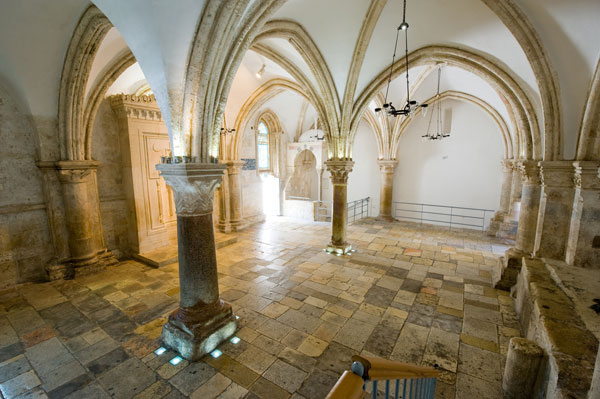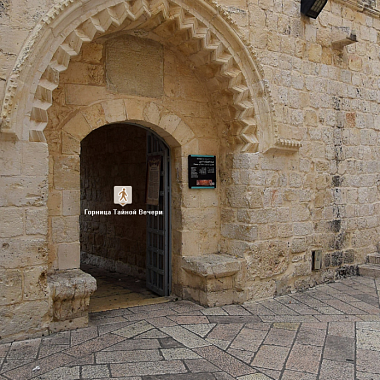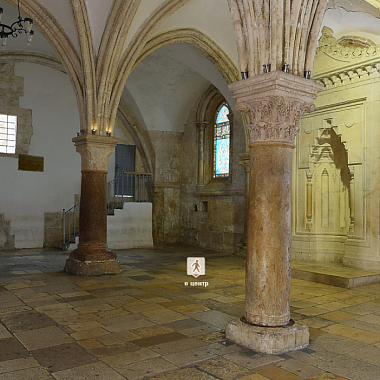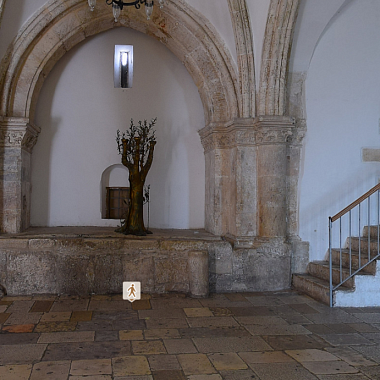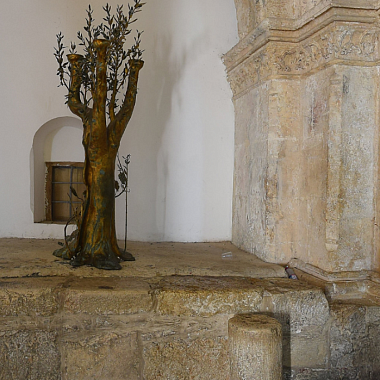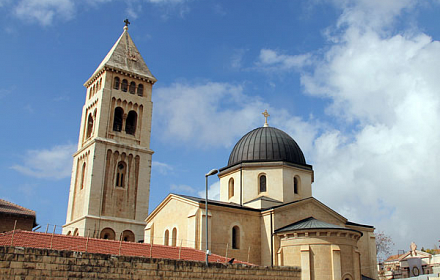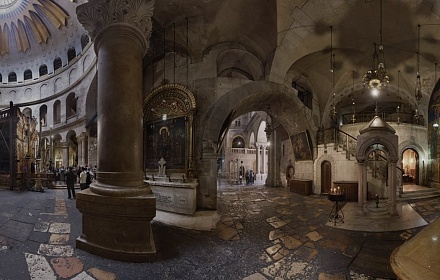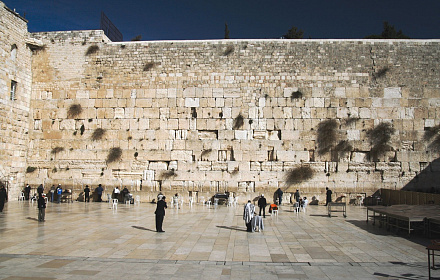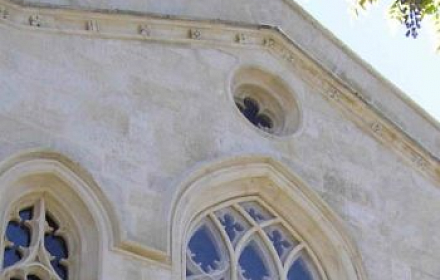About Virtual Tour
Street
The Cenacle is a holy site revered by Christians of the whole world. It’s located on the upper floor of a Gothic-style building with distinguishing characteristics of the time of Crusaders. This is a room above the King David’s Tomb, where Our Lord Jesus Christ had the Last Supper with the Holy Apostles. In the 12th century the ancient building was integrated into a new crusader church named “Our Lady” for Saint Mary. Due to its proximity to the holy sites, in the late Middle Ages it was frequently the subject of discussions and wrangling between Christians and Jews. In 1335 it was acquired by the Franciscans, and later, in the 16th century under possession of the Turks it was transformed into a mosque called Nebi Daoud. Today both holy sites are available to visit, but have different opening hours. This time we are going to visit the Cenacle, where the Savior had Passover meal with his disciples, while the chief priests decided to seize Him and put Him to death at any cost — and had already a prearranged agreement with a traitor. Let's go on a virtual pilgrimage
Entrance
In the time of Jesus Christ’s earthly life, the dining rooms (Coenaculum) were always the upper rooms in a building. Knowing that the enemies were looking forward to end His life, Jesus had to take refuge in the homes of sympathizing inhabitants of Jerusalem. He told Apostles to make all necessary arrangement for a Passover meal – during that supper Jesus began to unveil his betrayer without mentioning his name openly, and Judas gave himself away by answering “It isn’t me, is it, Rabbi?”The architect of Jerusalem Kingdom era, who built a church above the Zion chamber, designed it following the then mainstream Gothic architectural pattern. Though most specialists would rather call it Cypress Gothic style.
One of the columns is decorated with a shield bearing the coat of arms and the name of the German city of Regensburg. The pillars in the entrance to the upper room are older and were made in the Holy Land before the Crusader rule.
It gives another confirmation of its authenticity — or, at least of the most ancient parts thereof.
Inside
The Cenacle is related to one of the most important traditional Christian sacraments — the Holy Communion.The Passover meal eaten by Jesus and his disciples is considered the first Eucharist or Holy Communion: transubstantiation of bread and wine into the body and blood of Christ.
The Cenacle consists of two chapels one above the other, while the Last Supper of Jesus with his disciples was held in the upper room. Both rooms have traces of architectural layers from diverse eras. Several columns and the ancient ceiling boss depicting a Passover lamb date back to the period of Crusaders’ Jerusalem Kingdom, while the main mihrab, domes and additional stairs arise from the times of Mamelukes. It is also known that long before the Crusaders, in the 4th century there was a small basilica, built on the orders of St. Helen, Equal-to-the-Apostles – however, very little has remained from that construction. An attempt to reconstruct the ancient basilica was made a thousand years later by Robert of Anjou, King of Naples.
Center
Besides the Passover meal shared by Jesus Christ with disciples, the Cenacle is also the site of another important event from the New Testament – the descent of the Holy Ghost upon the Apostles described in the Book of Acts. While the disciples and Virgin Mary were together in the Cenacle, Holy Ghost in the form of divided tongues of fire appeared before each of them — the Spirit gave the Apostles the ability to speak in other world languages and they set off to preach the Gospel among all nations. The Christian holiday of Pentecost commemorates the descent of the Holy Spirit upon the Apostles.
The Cenacle’s interior is adorned with many symbolic images that arise from various time periods. One of the columns has a capital with two pelicans plucking at the breast of a third pelican, a Christian motif to represent the atonement. A more recent depiction of a tree with fresh shoots symbolizes the produce from the fertile land.
As it was mentioned before, since the late Middle Ages the building has remained in the hands of Muslims, while the Franciscan Order continues their attempt to reclaim this property in a court of law. The Turks of the Ottoman Empire built the walls so that the Mount Zion and the Cenacle were outside the city limits with a “waqf” status – public place for Muslim religious purposes without right of sale, but currently the building is managed by the State of Israel Ministry of Religious Services… Another holy site – the tomb of Prophet and Psalmist King David – will be visited during our next virtual tour.
Send donation
If you are in a difficult financial situation, we will light the candle for free. For that purpose email us at coordinator@santosepulcro.co.il
Payment Methods
